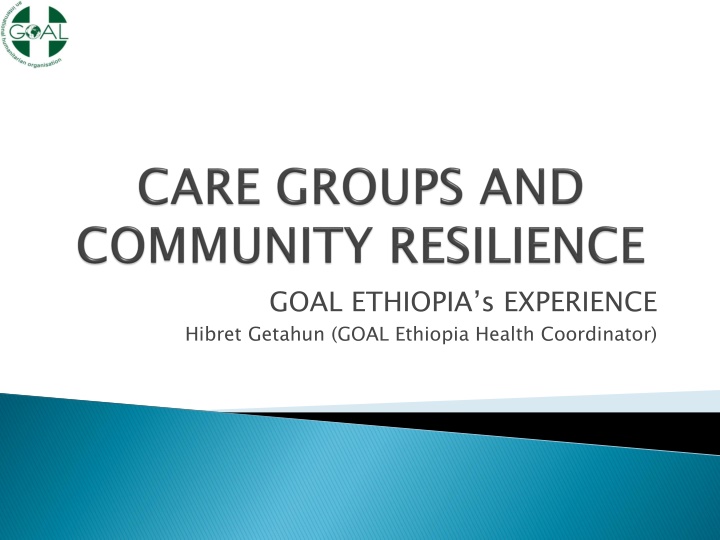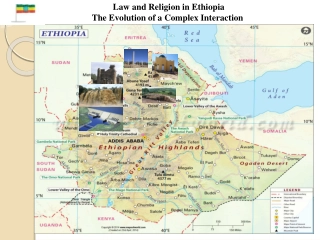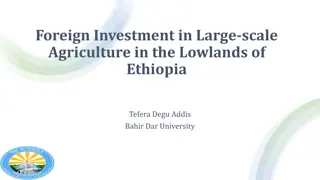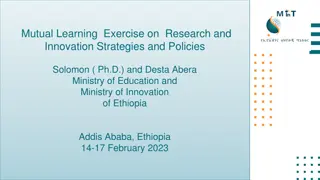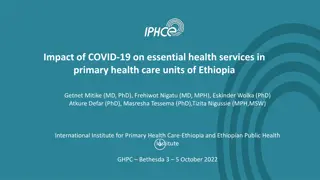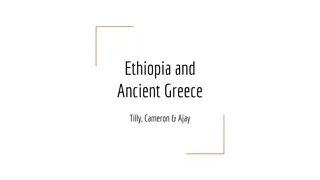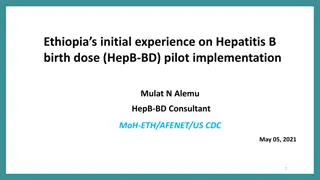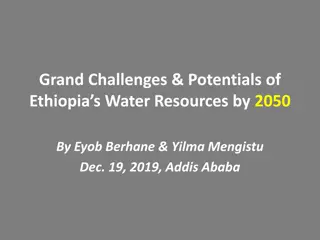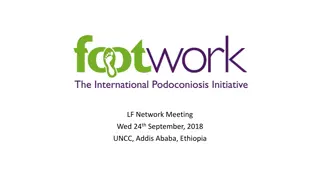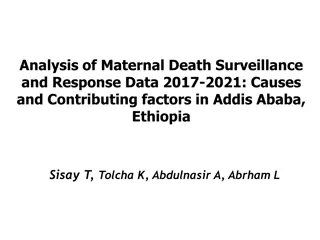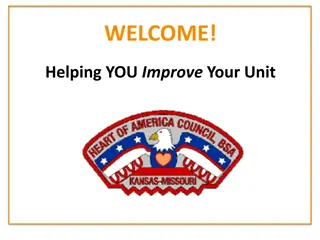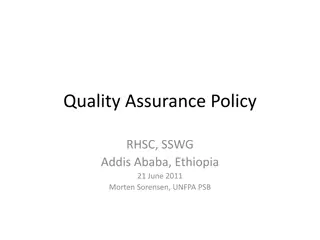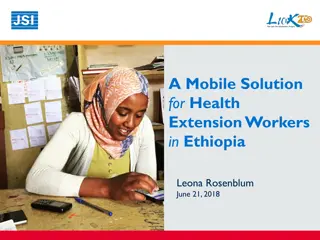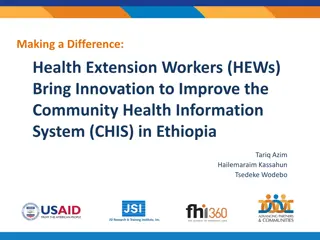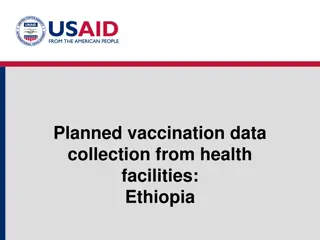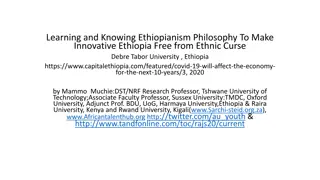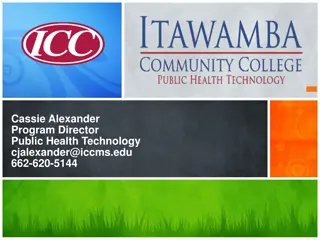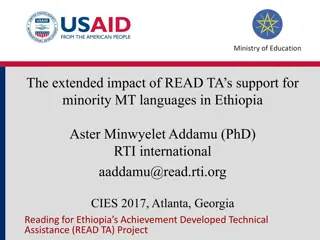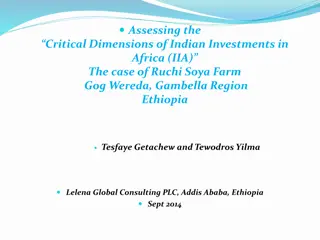GOAL Ethiopia's Experience: Community-Led Health Program in Sidama
GOAL Ethiopia's health coordinator, Hibret Getahun, led a successful 4-year USAID-funded program in Sidama benefiting 168K people. The program focused on key health themes, utilized Care Groups for peer support, and targeted mothers of young children. Despite challenges like food insecurity, the program showed positive impact, including improved nutritional practices and community resilience. The Care Groups also unexpectedly benefited men in the community. The program's success led to plans for replication and scaling up in other regions.
Download Presentation

Please find below an Image/Link to download the presentation.
The content on the website is provided AS IS for your information and personal use only. It may not be sold, licensed, or shared on other websites without obtaining consent from the author.If you encounter any issues during the download, it is possible that the publisher has removed the file from their server.
You are allowed to download the files provided on this website for personal or commercial use, subject to the condition that they are used lawfully. All files are the property of their respective owners.
The content on the website is provided AS IS for your information and personal use only. It may not be sold, licensed, or shared on other websites without obtaining consent from the author.
E N D
Presentation Transcript
GOAL ETHIOPIAs EXPERIENCE Hibret Getahun (GOAL Ethiopia Health Coordinator)
4 year grant funded by USAID in Sidama Covered area of 168K population with 1,640 Care Group Volunteers, 891 CHPs, and 60 HEWs Approach allowed for good coverage and peer support approach Four key themes in programme: Nutrition (25%), Diarrhea (25%), Malaria (25%) and Maternal/New-born Care (25%) Care Group approach using Designing for Behaviour Change-key component of implementation strategy (all program staff stakeholders trained at outset of grant)
Mothers of children < 2 years targeted and members selected by community mothers Unlike other community approaches, this allowed Program to specifically target key program group Meet once per month each mother had 10 HH to support Meetings lasted no more than 2 hours (1sthour discussing previous months work/challenges and then going theme for next month discussed) Volunteer Ethos-HEW also present at meetings and over time took over facilitation in some groups (strengthen link with Health Facility/ sustainability)
Final Evaluation coincided with period of acute food insecurity/drought in Sidama Zone (MoH scaling up emergency nutritional response) In program location evidence of community resilience even during this challenging time; Some Final Program Results(2011): Percentage of infants and young children age 6-23 months fed according to a minimum of appropriate feeding practices: (25.4% 57.9% Percentage of children 0-23 months who are underweight (28.1% Some Final Program Results(2011): 25.4% (bl)- 57.9% (final)) 28.1% (bl)-20.2% 20.2% (final) )
Care Groups had been in place for 2 years Mothers had improved coping strategies during times of drought and strengthened links with Health Post Unexpected Results (during final evaluation): men in the community stated they also valued the Care Groups (their wives kept the homes cleaner, they used FP so less likely to be pregnant and sick all the time!) Scale up: Nairobi on Designing for Behaviour Change (health/Food Security Teams) replicate Care Group Approach Scale up: currently regional training on-going in
Exiting out of Care Groups and ensuring that they continue to function (MoH) useful/Care Group model complements Gov Development Army approach however HEW s already overburdened Other option support natural community leaders (sustainability?) Supporting Facilitators (NGO staff, MoH) to facilitate and not lecture: support to continue this change in approach Exiting out of Care Groups and ensuring that they continue to function: involving HEW natural community leaders -receive additional training support Supporting Facilitators (NGO staff, MoH) to facilitate and not lecture: needs continued
